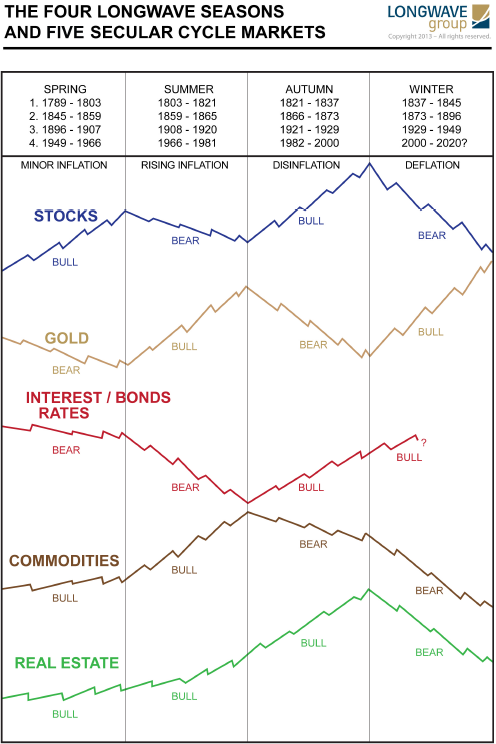
“By the law of Periodical Repetition, everything that has happened must happen again and again and again-and not capriciously, but at regular periods, and each thing in its own period, not another’s and each obeying its own law. The eclipse of the sun, the occultation of Venus, the arrival and departure of comets, the annual shower of the stars-all these things hint to us that the same Nature which delights in periodical repetition in the skies is the same Nature which orders the affairs of the earth. Let us not underrate the value of that hint.”
Mark Twain.
As many of you will know, I am an avid disciple of W. D. Gann. Indeed, Mr. Gann was one of the greatest proponents of financial cycles. Unfortunately he never divulged his mastery of cycles, writing, “It is not my aim to explain the cause of cycles. The general public is not ready for it and probably would not understand it or believe it.”
Tunnel Through the Air, P. 78
Tunnel Through the Air, P. 78
Well, I am about to share with you my discovery of secular, long term, intermediate term and short term cycles in the
investment markets. I am confident that when you have concluded your reading that you will understand that all financial markets are governed by different and interrelated natural time cycles. This comprehension should enable you to make appropriate and timely investment decisions.
A. Secular Cycles
Perhaps, the most important discovery that I have made with regard to different investment market cycles is that they occur within the confines of the long wave economic cycle seasons (I have been writing about the Long Wave Cycle since 1998). Stocks, bonds, gold, commodities and real estate experience their own unique bull and bear market cycles during the seasons. Each of these seasons lasts approximately a quarter of a complete 60+ years Long Wave Cycle, or 15 to 20 years. Thus, the bull and bear market cycles, at a minimum that last a complete season (15 to 20 years), bullish or bearish, are called secular markets.
Stock markets and the gold price experience their secular bull and bear markets in opposite long wave seasons. Stock prices are bullish in the spring, the price of gold is bearish; stocks are bearish in the summer, gold is bullish; stock prices are very bullish in the autumn, the gold price is very bearish; stock prices are very bearish in the winter, the prices of gold and gold stocks are very bullish. Stock markets and gold and gold stock prices complete two bull and two bear secular markets, opposite to each other, during one full Long Wave Cycle.

Similar to stock markets and the prices of gold and gold equities, the bond market and commodity markets experience their bull and bear secular markets opposite to each other, but unlike stock markets and the gold price, the bond market and commodities experience two consecutive bullish or bearish secular markets. This means that bonds and commodities only experience one bull and one bear market during each long wave cycle. Bonds are bearish in the spring, commodities are bullish; bonds are very bearish in the summer, commodities are very bullish, bonds are bullish in the autumn, commodities are bearish, bonds are very bullish at least in the early winter, commodities are very bearish in winter.
….continue reading this thorough 27 page report HERE












